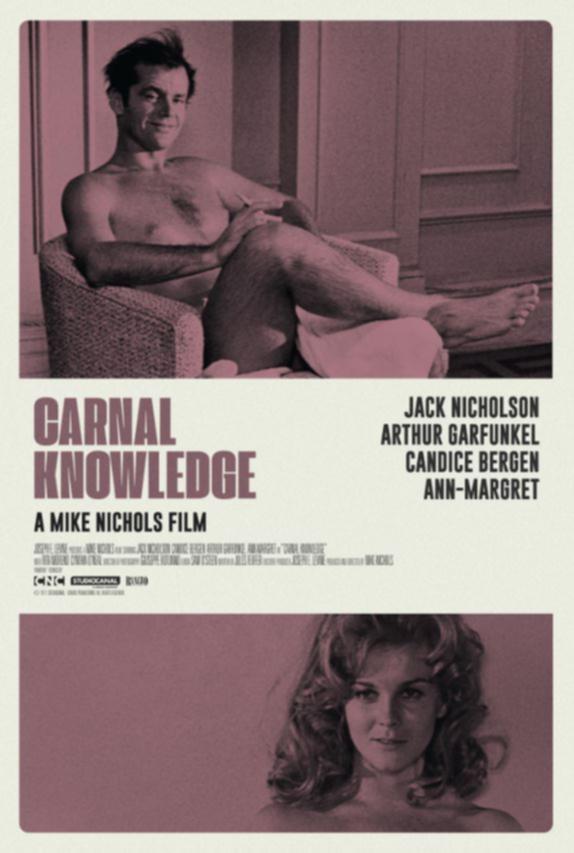The Economist: Is there more or less sex on screen these days?

Fifty years ago the Supreme Court dabbled in film criticism.
A cinema manager in Georgia had been prosecuted for “distributing obscene material” in the form of “Carnal Knowledge” (1971), a film about two men’s sexual pathologies starring Jack Nicholson and Art Garfunkel. It was rated r, denoting adult content, but it was hardly explicit. In one scene you can hear moans of pleasure, but all you see is an empty living room. The court ruled that the film was not obscene.
Scriptwriters, directors and distributors in the West no longer fear censors’ wrath. But the subject of sex is being judged again—this time in Hollywood circles. Recently film-makers, critics and viewers have been debating the lack of sex on screen.
Sign up to The Nightly's newsletters.
Get the first look at the digital newspaper, curated daily stories and breaking headlines delivered to your inbox.
By continuing you agree to our Terms and Privacy Policy.Some feel that Hollywood has entered a puritanical age and place blame at the feet of the #MeToo movement and the ubiquitousness of celibate superhero films, as well as the need to appeal to buttoned-up markets abroad. Others disagree; they point to examples of highly explicit scenes in recent films, including “Fair Play” and “Poor Things”, which involve sex in public toilets and brothels.

Who is right? Stephen Follows, a film data analyst, has examined the 250 highest-grossing movies in America every year since 2000.
By parsing data from film-rating bodies as well as information from movie databases—in which a title’s “sex and nudity” is ranked on a scale from “none” to “severe” — he has found that the level of sexual content in films has fallen by almost 40 per cent.
Abstinence, in other words, is in vogue. In 2000 less than 20 per cent of the highest-grossing movies had no sexual content at all. Today almost half lack it (see chart).
There may be fewer sex scenes, but those that make the cut are more graphic than ever before. In 1992 a flash of genitals in “Basic Instinct” sent audiences and critics into a tailspin; in 2023 full-frontal female nudity was featured in the films “Joy Ride” and “No Hard Feelings” without prompting a furore. Both “Fair Play” (pictured) and “Saltburn”, also released last year, even had characters performing oral sex on their lovers while they were menstruating.
Erect penises—once verboten, now filmed using a prosthesis—have popped up in films such as “May December”. “Mary & George”, a historical drama series about King James I of England, strives for naked realism: in one scene George, the king’s favourite, licks his hand to lubricate his penis. D.C. Moore, the screenwriter, says that it is a story about a monarch “whose desire pulls him apart. So you need to see his desire.” Some viewers may desire not to have seen it.
Intimacy coordinators play an important role. On set, they liaise with the director and actors to choreograph scenes with sex (and sexual violence).
Ita O’Brien is a leading intimacy coordinator who has worked on shows including “Normal People” (about lustful adolescents) and films such as “Magic Mike’s Last Dance” (about male strippers). She likens her job to that of a stunt coordinator who wants to keep actors safe while choreographing the most exciting fight they possibly can. Sex can still be explicit, she says, but “it’s in service of the character and storytelling”.
As a result, intimacy coordinators will often ask filmmakers to consider why the moment is important in the narrative. (After all, viewers who want to watch sex without a credible story have easy access to pornography on the internet.) Ms O’Brien says that sometimes those conversations result in changes to the script or the sex scene being deleted.
Instances, where that has happened, are ammunition for those who feel that Hollywood has been underperforming in the bedroom. Some actors, including Jennifer Aniston and Sean Bean, have said that intimacy coordinators are unnecessary, or that they stifle the spontaneity of sex scenes.
That they have become almost ubiquitous on film sets in the wake of #MeToo, detractors argue, suggests that they are a symptom of a more censorious age.
Yet other actors have praised intimacy coordinators and say their efforts help them to focus on the job. Kristen Stewart, the star of “Love Lies Bleeding”, a racy new film, has said that choreographing amorous moments, rather than being “thrown into” them, prevents actors from “being self-conscious face-smashers”.
The fate of the sex scene rests with the next generation. That does not bode well: Generation Z is notoriously chaste. Not only are youngsters having less sex than their elders did, but they also want to see less of it on screen, according to a poll conducted last year by the Centre for Scholars and Storytellers at the University of California, Los Angeles.
Asked to rank 19 topics they enjoyed watching in TV shows and movies, adolescents put “romance and/or sex” 13th; seventh was “content that doesn’t include sex or romance”.
The future, it seems, may be pg-13.
